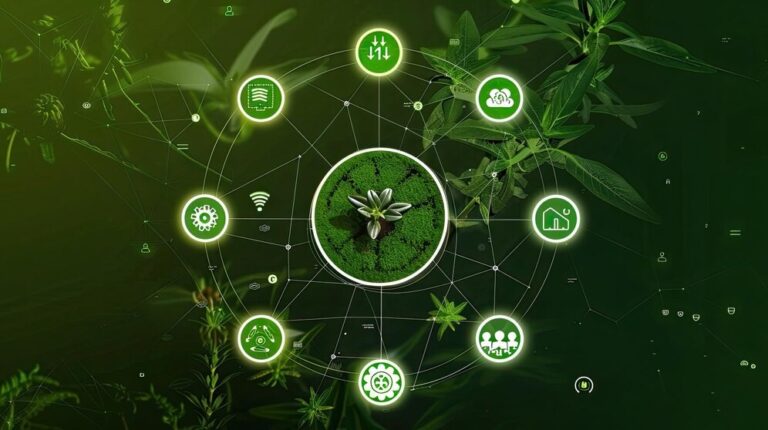What Goes into Forensic Lab and Fingerprint Analysis? A Quick Overview
Also called criminalistics sometimes, forensic analysis involves examining and evaluating crime scene evidence and others in a scientific setting. This examination aims to determine facts for a legal case to aid court proceedings. Different types of analysis are done – genetic identification through DNA analysis, individual identification through fingerprint analysis, death investigation through forensic pathology, chemical effect analysis through toxicology, etc. Since forensic science combines scientific examination and law enforcement, the success of forensic analysis depends on the efficiency and accuracy of various tools. To be precise, lab equipment is critical in accurately examining evidence. Let’s probe into everything related to fingerprint analysis, an essential part of forensic investigation, for some ideas.
Fingerprints analysis
Fingerprints can be traced on any surface, including the human body. Analysts segregate fingerprints into three types based on the surfaces – 3D plastic prints, visible/ invisible, and porous/nonporous. Finger marks on wet paint, wax, soap, fresh caulk, and other soft surfaces are three-dimensional plastic prints. Marks formed on the hard surfaces are either patent or latent prints. Patent or visible prints can be seen on surfaces due to blood, paint, ink, dirt, etc. These prints can be traced on wood, cloth, paper, and other porous surfaces and can be smooth or rough texture-wise. Nonporous surface examples include plastic, glass, and metal.
Conversely, latent prints are created from the skin’s sweat or the body’s natural oil on another surface, which require scrutiny for detection. Popular methods include chemical reagents, fingerprint powders, and Alternate Light Sources (ALS) devices.
Fingerprints collection
Collecting all the finger impressions from the crime scene is crucial for forensic fingerprint analysis. Visible or patent fingerprints can be found through high-resolution cameras with a specific measurement scale of forensic grade. They can improve image quality through ALS, dyes, chemicals, and other means during photography if required. Detecting and gathering latent fingerprints often includes applying powder on nonporous or smooth surfaces. If this reveals impressions, images are captured, and prints are taken from the surface using transparent adhesive tape and pasted on a latent lift card to store the print. Due to contamination risks to the evidence because of fingerprint powders, other investigative tools and sources can also be utilized, such as cyanoacrylate, ALS, etc.
Furthermore, collected evidence can be taken to a lab for precise testing and analysis. There has to be adequate equipment for this.
Lab equipment for fingerprint analysis
A well-equipped forensic laboratory will have various analyzers, microscopes, and other tools for criminal investigations. Each device determines the evidence’s accuracy, precision, and reliability. Let’s find out about a few of them.
Biosafety cabinets and fume hoods
These create a safe working atmosphere in forensic labs, where people handle biological materials and volatile chemicals. These units prevent staff from breathing in toxic fumes and samples from becoming contaminated. All these scenarios must be maintained to protect the integrity of the forensic test. Whether dealing with drugs or poisonous compounds for chemical analysis, one must include proper fume hoods and cabinets in their labs.
Evidence-drying cabinets and fuming chambers
These unique tools help preserve and process evidence related to a crime scene. Drying cabinets can be used to handle wet evidence to protect them from facing any damage. Otherwise, such biological proofs and the latent prints can easily be compromised. Fuming chambers help track latent prints that elude the naked eye through exposure to cyanoacrylate vapors.
Opioid evidence handling workstation
These tools contain fume and offer accurate weighing capacities, representing two critical functionalities. The cabinets can measure chemicals and powders up to four decimal points. The filter system removes all particles efficiently to provide the best results. They also have vacuum systems to gather the remaining powder from the working surface and push it to the filter. Air quality is also maintained, reducing contamination risks in the lab environment.
Ninhydrin and DFO Chamber
These equipment types help discover latent fingerprints on absorbent surfaces by applying agents such as Ninhydrin and DFO in a well-regulated environment where temperature, moisture, and other elements are fully controlled. These chamber cabinets are connected with special software for parameter setting and result recovery. You can find them equipped with a touchscreen to enable you to program humidity, temperature, and operation time to a desirable degree.
Evolution of forensic lab devices
As evident, forensic science is growing by leaps and bounds due to technological support, culminating in forensic labs that are much more capable than before. This evolution is incremental and instrumental in shaping the forensic analysis landscape. The more lab equipment becomes advanced, the higher the accuracy and efficacy of the forensic examinations. Forensic scientists feel more empowered when doing forensic analysis, which forms a solid ground for any criminal justice system. Researchers can rely on them to overcome limitations posed by modern investigative situations. In this context, one must realize that storing and managing biological evidence well is also crucial. Various tools are available for them, too. For instance, instruments like centrifuges are required to contain blood and other fluids for toxicology testing and DNA profiling. Some samples demand longer preservation. They need freezers to retain their strength for evidence validity.
Nevertheless, forensic analysis is a vast domain that demands all technical and technological support for the best outcomes. Today, you can set up your private lab with all the necessary systems and processes. Whether you need fume hoods, biosafety cabinets, or something else, all these can be used to determine the authenticity of evidence for a crime scene. Since this field is continuously revamping, one must embrace the latest technologies and features for forensic lab environments.
Imagine what more you need for your forensic lab when just a fingerprint analysis process has to go through so many stages, such as analysis, comparisons, evaluation, and verification. So, research your requirements and choose equipment accordingly. Any research or investigative work gets full recognition once all aspects are covered and the results are convincing. However, buy your products from reliable manufacturers and suppliers only. If you have a good company in your own country that deals with lab equipment of this kind, you can contact them with your requirements for hassle-free delivery.







